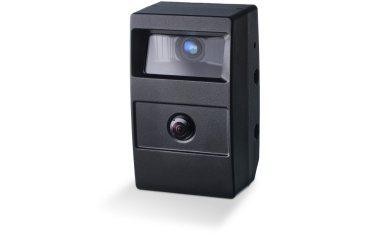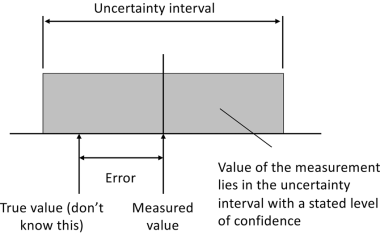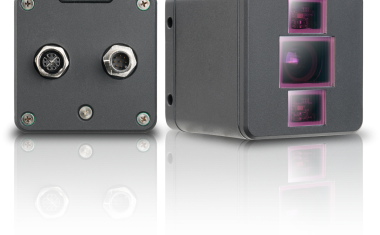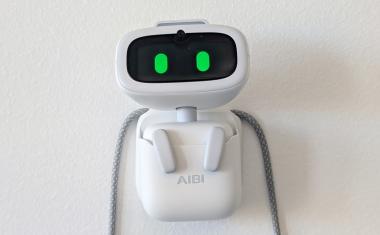Snapshot
The photography of fast motions, like the ones of birds, is an art. In a snapshot of extremely short exposure time, enough light has to be provided to freeze the movement and obtain a sharp image. In the industry, this problem also occurs with fast processes, like reading and verifying of codes in motion. The engineers at Leuze electronics found a solution to this and thus provide the user with a range of new possibilities of employing code readers.
Wing movement of insects or birds: This motion is too rapid to be seen by the human eye. Capturing just this movement with a camera is the obsession of nature photographer Stephen Dalton. He had his breakthrough in the seventies, when he was the first who captured an absolutely clear and sharp image of an insect in free flight. It had taken him several years of experiments to prepare and tune the camera and flash units.
But not only in nature, also in industrial applications, e. g. logistic processes, it is necessary to capture fast motions. There, the codes of fast moving parts have to be read reliably in order to identify these parts unambiguously. In this case, the exposure time is decisive. In order to capture a sharp image during a rapid movement, the exposure time must be kept very short. Leuze electronics smart cameras of the LSIS 400i product family permit an exposure time as fast as 54 µs; the resulting images have almost no blurring. A short exposure time, however, means that the amount of incident light is low. As a result, the image tends to be too dark. Leuze provides a solution to this problem: during the short exposure time, the LEDs are flashed through the application of a corresponding overcurrent. The result is an image that is brighter than obtained by comparable devices.
The LSIS 400i Series
The LSIS 400i product family illuminates the field of view very uniform by means of free-form shapes. This is achieved through the use of a technique in which specially calculated lenses are positioned in front of the LEDs to distribute the point-shaped light of the source very homogeneously on the image field in a rectangular shape. Without these lenses, the circularly arranged LEDs would illuminate the image field inhomogeneously. This, in turn, would make it difficult or even impossible to read the codes or to detect and to analyse objects.
For industrial use, the devices are, in addition to the M12 connection technology, also equipped with a metal housing and glass window and are designed to protection class IP 65 or IP 67. For particularly sensitive areas, such as the food industry, the windows are also available in plastic.
Process communication is by means of eight freely configurable I/O ports, one RS232 interface or via Ethernet. A stan-dard browser allows a user friendly web configuration of the code reader. Additionally, a built-in display shows the reader's status and ensures diagnostic functions.
The Code Reader LSIS 422i
The new addition, the LSIS 422i, offers all of these features as well. It reads not only high-contrast, affixed (printed) barcodes and 2D Data Matrix codes, but also those that are directly marked (laser-etched or dot-peened). If the code is applied on a glossy surface, reflections make reading more difficult. With homogeneous illumination, such as that offered by the Leuze smart cameras, this is not a problem, however. Benefiting from this feature are, above all, the circuit board and automobile industries, which, in addition to the part number, also need to unmistakably identify individual serial numbers for traceability purposes.
Acceleration of the Reading Process
The respective software is designed in that way, that the user can set some parameters on his own. For example, a prefilter can be used to define certain code properties in order to accelerate the reading process. If the user knows what type of code is being used, he can set the corresponding properties. With 1D code, the step size of the search can also be increased in order to boost the performance of the camera. In this way, it is possible not only to detect large or small codes, but also to increase the reading speed. Other options for application-specific presettings for one-dimensional codes include read direction and inverted codes. Even if it is the same code, a black code on a white background results in a different image for the camera than a white code on a black background. If it is known that the code is inverted, it is possible to define this in advance in order to save the time that the software would otherwise need to automatically detect the inverted code as such.
Inverted two-dimensional codes can also be read. With these, the reading mode can be set: "fast" for codes of good quality or "robust" for more critical, e.g. directly marked codes. If Data Matrix codes are not the typical squares, but are instead a pattern of holes, the algorithm also detects these so-called dot-peened codes by means of the presetting. Also mirrored codes can be read by the software.
Determining Code Quality
In addition to reading the codes, quality parameters of the read codes can be determined and evaluated. This is particularly useful if the codes will be read later by various types of readers. Thus, it is possible to inspect the quality of the code immediately after printing in order to ensure that the generated code can be reliably read. The user can specify the quality criteria himself and, for example, define a value below which a warning is output. The device can trigger a response not only for the code quality, also during verification. Because the content of the code is known during verification, the read content does not need to be passed on to the control. Digital outputs, which are appropriately set depending on whether the content matches or is different than what is expected, suffice.
Leuze Codes
With the LSIS400i smart cameras, Leuze electronic always specifies a combination of three numbers. The first number stands for the product family, with its design and performance data. For example, the 400 series has a larger housing than the 100 family. The number that follows provides information on the software version. "1" means Blob analysis. With a 41x smart camera, completeness or presence monitoring can be performed. If a "2" appears in the second position, software for code reading is included, as is the case with the new LSIS 422i. The 46x model includes all available software tools.











